



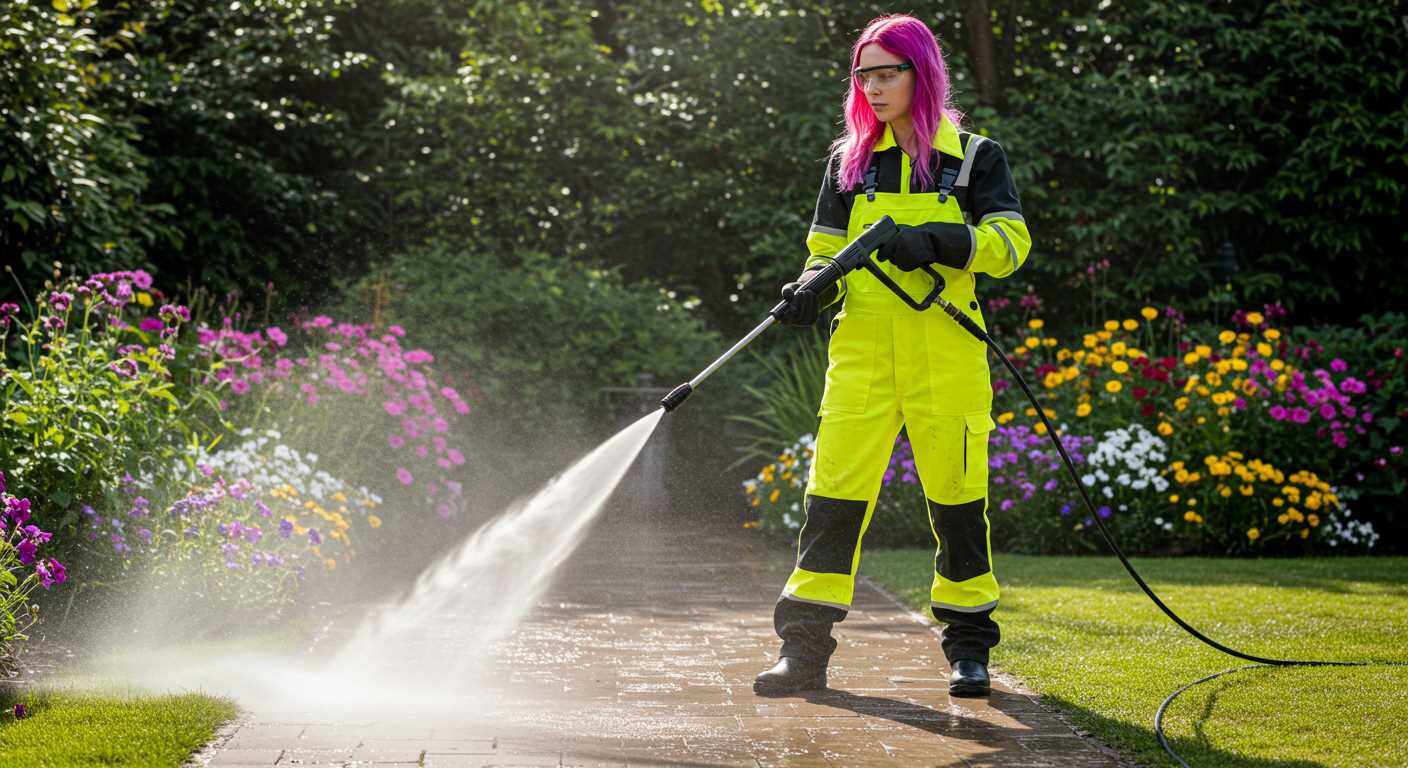
For optimal results, a unit delivering between 1200 and 1900 pounds per square inch is the sweet spot for cleaning vehicles. Using a setting within this range effectively removes dirt and grime without risking damage to the paintwork or delicate components.
During my years in the industry, I witnessed countless instances where higher pressures led to unfortunate outcomes–dents, stripped paint, and even damaged seals. I remember a colleague who used a 3000 psi model on his classic car; the aftermath was heart-wrenching as he had to spend thousands on bodywork repairs.
In my experience, opting for an adjustable nozzle is also a game changer. This feature allows you to switch between various spray patterns, ensuring that you can tackle tough spots while being gentle on sensitive areas. A wide-angle spray works wonders for broader surfaces, while a concentrated jet can help with stubborn stains.
Always remember to maintain a safe distance from the surface–typically around 2 to 3 feet–to avoid any unintended consequences. This distance helps to maintain an effective cleaning action while protecting the integrity of your vehicle’s finish.
Recommended Pressure Levels for Vehicle Cleaning
For optimal results while maintaining your vehicle’s finish, aim for a cleaning unit delivering between 1200 and 1900 pounds per square inch. This range effectively removes dirt and grime without risking damage to the paintwork.
Factors to Consider
- Distance: Maintain a distance of at least 2 feet from the surface when cleaning. This helps prevent any unintended scratches or abrasions.
- Nozzle Selection: Use a wide-angle nozzle (25 to 40 degrees) for a gentler spray. A more concentrated stream can be too harsh.
- Surface Type: Adjust your approach based on the vehicle’s surface. For example, avoid high pressure on plastic parts or decals.
Personal Tips
- During my years testing various models, I found that electric units are often quieter and easier to handle for home use.
- Before the main wash, pre-soak the vehicle with a foam attachment to loosen tough grime.
- Always test on an inconspicuous area first to assess the impact on your vehicle’s finish.
By adhering to these guidelines, you can achieve effective cleaning while protecting your vehicle’s aesthetics. It’s all about finding the right balance between power and care.
Understanding PSI and Its Impact on Car Washing
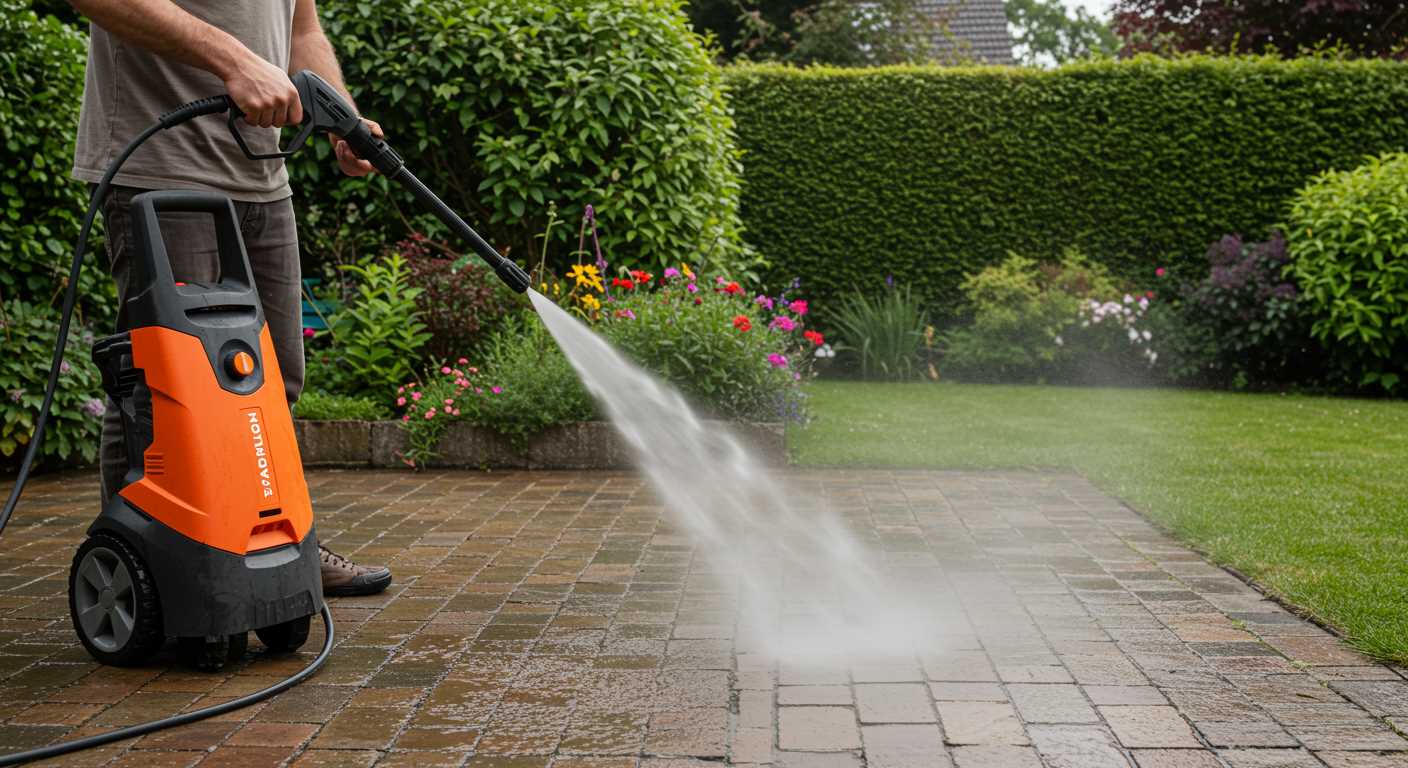
Using a unit of measurement for water pressure can significantly influence the outcome of your vehicle cleansing routine. I often recommend sticking to a range between 1200 and 1900 for optimal results without risking damage. This pressure level effectively removes dirt and grime while preserving the integrity of paintwork and delicate components.
Choosing the Right Nozzle
A pivotal factor in achieving a satisfying wash lies in the nozzle selection. Opt for a wide-angle spray nozzle, typically 25 to 40 degrees, to distribute water evenly across surfaces. This prevents concentrated streams from damaging the paint or stripping away protective wax. During my years in the industry, I’ve observed that using a narrow nozzle can lead to unintended scratches and paint issues, so it’s best to avoid them for automotive care.
Maintaining Distance
Distance plays a crucial role in how effective the cleaning session will be. Keeping the nozzle approximately 2 to 3 feet away from the surface allows for an effective wash without exerting excessive force. I remember a time when I got too close, and the results were less than desirable–a chipped paint job that took time and money to rectify. Always be mindful of your distance for a successful wash.
In conclusion, understanding the nuances of water pressure and its application can transform the way you care for your vehicle. A little knowledge goes a long way in preserving that showroom shine while ensuring longevity for your automotive investment.
Recommended PSI Range for Different Car Types
For compact vehicles, a setting between 1200 and 1900 is ideal. This level is sufficient to remove dirt without risking damage to the paint or delicate components. I’ve found that this range works wonders on hatchbacks and sedans, leaving them sparkling without the worry of scratches.
When it comes to SUVs and larger vehicles, a range of 2000 to 2500 is more appropriate. These models often have heavier grime and require a bit more power for effective cleaning. I’ve tackled a few muddy adventures in my SUV, and using this pressure range has consistently yielded excellent results while keeping the finish intact.
For luxury or classic cars, maintaining the vehicle’s aesthetics is paramount. A gentle approach with 1100 to 1500 psi is recommended. I’ve cleaned my vintage car with this range and was amazed at how effectively it lifted dirt without compromising the paintwork or chrome details.
Lastly, for off-road vehicles or trucks that are constantly exposed to rugged conditions, a higher setting of 2500 to 3000 psi can be beneficial. However, care should be taken to avoid sensitive areas. I’ve often used this level on my own truck after a day in the fields, and it makes quick work of dirt and mud while keeping everything intact.
Considering budget options? You can find reliable models under £100 that fit within these ranges, offering a balance of power and safety for your vehicle.
Comparing Electric vs. Gas Models for Vehicle Maintenance
Electric models are ideal for regular upkeep. They offer a quieter operation and are generally lighter, making them easier to manoeuvre. During my time testing various units, I found that many electric options provide enough force to clear dirt without damaging sensitive surfaces. They typically operate within the 1200 to 1900 range, which is sufficient for most vehicles.
On the other hand, gas units deliver higher power and are suited for heavy-duty tasks. Their ability to generate pressure upwards of 3000 makes them effective for tougher stains and larger vehicles like trucks or SUVs. However, I’ve noticed they can be overkill for a standard sedan and may risk damage to paintwork if not handled carefully.
Another aspect to consider is convenience. Electric cleaners plug into a standard outlet, allowing for hassle-free use. I often prefer this setup for quick washes after a rainy drive. Gas models require more preparation, including fuel and maintenance checks, which can become burdensome for casual users.
In terms of portability, gas machines excel due to their independence from power sources. I remember using a gas unit during a remote camping trip to clean my vehicle after a muddy excursion. It was a game changer, allowing me to maintain my vehicle without worrying about finding an outlet.
Ultimately, the choice between electric and gas models hinges on personal needs. If regular maintenance and convenience are priorities, electric is the way to go. For those tackling tougher jobs or needing mobility, gas units provide unmatched power. Consider your vehicle type and washing frequency to determine the best fit for your situation.
Key Features to Look for in a Car-Safe Pressure Washer
When selecting a unit for washing your vehicle, focus on features that enhance both safety and performance. One standout characteristic is adjustable nozzle settings, which allow you to modify the spray pattern. This flexibility is crucial for reaching various parts of your vehicle without risking damage. I remember using a model with a simple twist nozzle, which made it easy to switch from a fan spray for rinsing to a more concentrated stream for stubborn grime.
Water Temperature Control
Another feature worth considering is the ability to control water temperature. Warm water can effectively break down dirt and grime without the need for excessive force. During my time testing equipment, I found that units with built-in heaters made a noticeable difference in cleaning efficiency. Just be cautious, as too high a temperature can still harm delicate surfaces.
Pressure Regulation
Look for models equipped with pressure regulation systems. This allows you to maintain a safe and consistent level throughout the wash. I once used a unit lacking this feature, and the fluctuations in pressure made it difficult to clean evenly, leading to frustration and an unsatisfactory result. A reliable regulator ensures that you can wash your vehicle confidently without worrying about causing scratches or damage.
| Feature | Benefit |
|---|---|
| Adjustable Nozzle | Custom spray patterns for different surfaces |
| Water Temperature Control | Enhanced cleaning without high pressure |
| Pressure Regulation | Consistent performance, reducing risk of damage |
| Detergent Injection System | Effective cleaning with less effort |
| Compact Design | Easy storage and portability |
A detergent injection system is another feature that can significantly enhance your washing experience. It allows for the use of car-specific cleaning solutions, ensuring thorough cleaning without additional scrubbing. I found that having this feature saved me time and effort, especially when dealing with tougher stains.
Lastly, consider the design and weight of the unit. A compact and lightweight model is easier to manoeuvre, making the cleaning process more enjoyable. After all, the last thing you want is to struggle with an unwieldy machine while trying to keep your vehicle in pristine condition.
How to Adjust PSI Settings for Sensitive Car Surfaces
To maintain the integrity of delicate surfaces, it’s imperative to set the pressure level appropriately. For most automotive finishes, I recommend starting at around 1200 to 1500 units. This range effectively removes dirt without risking damage to paint or trim.
Steps to Adjust Pressure Settings
- Identify your equipment’s capabilities. Most models come with adjustable settings; consult the manual for precise instructions.
- Begin at the lowest setting. Gradually increase the pressure while testing on a small, inconspicuous area. This helps gauge the impact without risking visible damage.
- Keep the nozzle at a distance of at least 2 to 3 feet from the surface. This reduces the risk of concentrated force that may mar the finish.
- Use a fan nozzle for a wider spray pattern. This disperses the water pressure and is gentler on sensitive areas.
Additional Tips
- Always pre-rinse the vehicle with water to remove loose dirt. This step minimises the chances of scratches during the cleaning process.
- If your vehicle has special coatings or finishes, consult manufacturer guidelines for specific pressure recommendations.
- For heavy grime, consider a pre-treatment with a suitable cleaning solution. This approach allows you to use lower pressure effectively.
- After washing, apply a wax or sealant to protect the finish from future contaminants.
For additional cleaning insights, you might find this resource interesting.
Common Mistakes to Avoid When Using a Pressure Washer on Cars
Using a high-powered cleaning machine can be an excellent way to maintain your vehicle’s appearance, but several common errors can lead to damage. One significant mistake is getting too close to the surface. Standing too near while spraying can strip paint or damage delicate finishes. Always maintain a safe distance, typically around 2-3 feet, to ensure a gentle yet effective clean.
Ignoring the Right Nozzle
Another frequent error is neglecting the importance of the nozzle type. Each nozzle has a different spray angle and pressure output. Using a narrow nozzle, like a 0-degree, can result in concentrated force that may cause dents or scratches. Opt for a wider spray pattern, such as a 25-degree or 40-degree nozzle, for a gentler wash that covers more area without risk.
Washing in Direct Sunlight
Cleaning your vehicle in direct sunlight can lead to water spots and streaks. The heat causes water to evaporate quickly, which can leave residue behind. Choose a shaded area or wash your vehicle during cooler times of the day for optimal results. Ensuring a proper surface temperature will help in achieving a thorough and effective clean without unintended consequences.
Accessories That Enhance Car Washing with a Pressure Washer
Investing in the right tools can dramatically improve your vehicle cleaning experience. A foam cannon is an absolute game changer. It attaches easily to your sprayer and produces a thick foam that clings to the surface, loosening dirt and grime. I remember the first time I used one; the thick foam not only made rinsing easier but also left a spotless finish. Pair it with a quality car shampoo specifically designed for foam applications for optimal results.
Brush Attachments for Detail Work
Using a brush attachment can make a significant difference, especially for wheels and textured surfaces. I often recommend a soft-bristled brush to prevent scratching while effectively removing brake dust and road grime. One day, I tackled a friend’s neglected vehicle, and the brush made quick work of the dirt that regular washing couldn’t handle. It saved time and ensured thorough cleaning without damage.
Extension Wands for Hard-to-Reach Areas
Extension wands are invaluable for accessing tight spaces and high areas like roofs or undercarriages. During my testing days, I often found myself struggling with angles; a good extension wand made those areas easily reachable. I once cleaned an SUV with a roof rack that seemed impossible to manage without one. The right wand not only provided the reach but also allowed me to maintain control over the spray, preventing any mishaps.
Maintenance Tips for Your Pressure Washer After Car Washing
After you’ve finished cleaning your vehicle, the first step is to thoroughly rinse out the nozzle and wand. This helps prevent any soap or dirt residue from clogging the system. Just run clean water through it until the stream runs clear.
Next, inspect the hoses for any signs of wear or leaks. Even a small crack can lead to pressure loss and reduce performance. If you notice any issues, replace the hose promptly to ensure smooth operation during your next use.
Drain any leftover water from the unit to avoid freezing in colder months. Simply disconnect the hose and let the unit sit until all liquid has escaped. This is a crucial step to prolong the life of your equipment.
Check the filter as well. A clean filter is vital for maintaining optimal performance. If it’s dirty, remove it and rinse under running water until it’s clean. For stubborn debris, a soft brush can be helpful.
After your session, it’s wise to lubricate any moving parts, especially the connections and fittings. A light machine oil or grease will do the trick, ensuring everything operates smoothly during your next use.
Store your equipment in a cool, dry place, preferably covered. This protects it from dust and debris, which can accumulate and affect functionality over time.
Lastly, consider running a cleaning solution through the system periodically. This can help remove any build-up and keep everything in top shape. Just make sure to follow the manufacturer’s recommendations for compatible cleaners.
FAQ:
What is the recommended PSI range for pressure washing a car?
The recommended PSI range for pressure washing a car is typically between 1200 and 1900 PSI. This level of pressure is sufficient to remove dirt and grime without damaging the paint or delicate components of the vehicle. It is advisable to start at the lower end of this range and adjust as necessary, depending on the type of dirt and the specific car model.
Can using a pressure washer with too high PSI damage my car?
Yes, using a pressure washer with a PSI higher than 1900 can potentially damage your car. Excessive pressure can strip away paint, damage seals, and even cause dents in softer materials. It’s crucial to use the appropriate pressure to ensure the longevity of your vehicle’s finish and components. Always test a small, inconspicuous area first if you’re unsure.
What type of nozzle should I use with a pressure washer for cleaning my car?
For cleaning a car, it is best to use a nozzle with a wide spray pattern, such as a 25-degree or 40-degree nozzle. These nozzles help distribute the water over a larger area, reducing the risk of damage while still effectively removing dirt. Avoid using a zero-degree nozzle, as it concentrates the pressure in a small area and can cause harm to the paintwork.
Are there any specific techniques I should follow when pressure washing my car?
Yes, there are several techniques to follow for effective and safe pressure washing of your car. Start by rinsing the vehicle with water to remove loose dirt. Use a soap specifically designed for pressure washers and apply it using a low-pressure setting. Work from the top down to ensure that dirt flows off the surface. Rinse thoroughly after washing, and avoid spraying directly at sensitive areas like the engine, electrical components, and the underside of the car. Always keep the nozzle at a safe distance from the car’s surface to prevent damage.

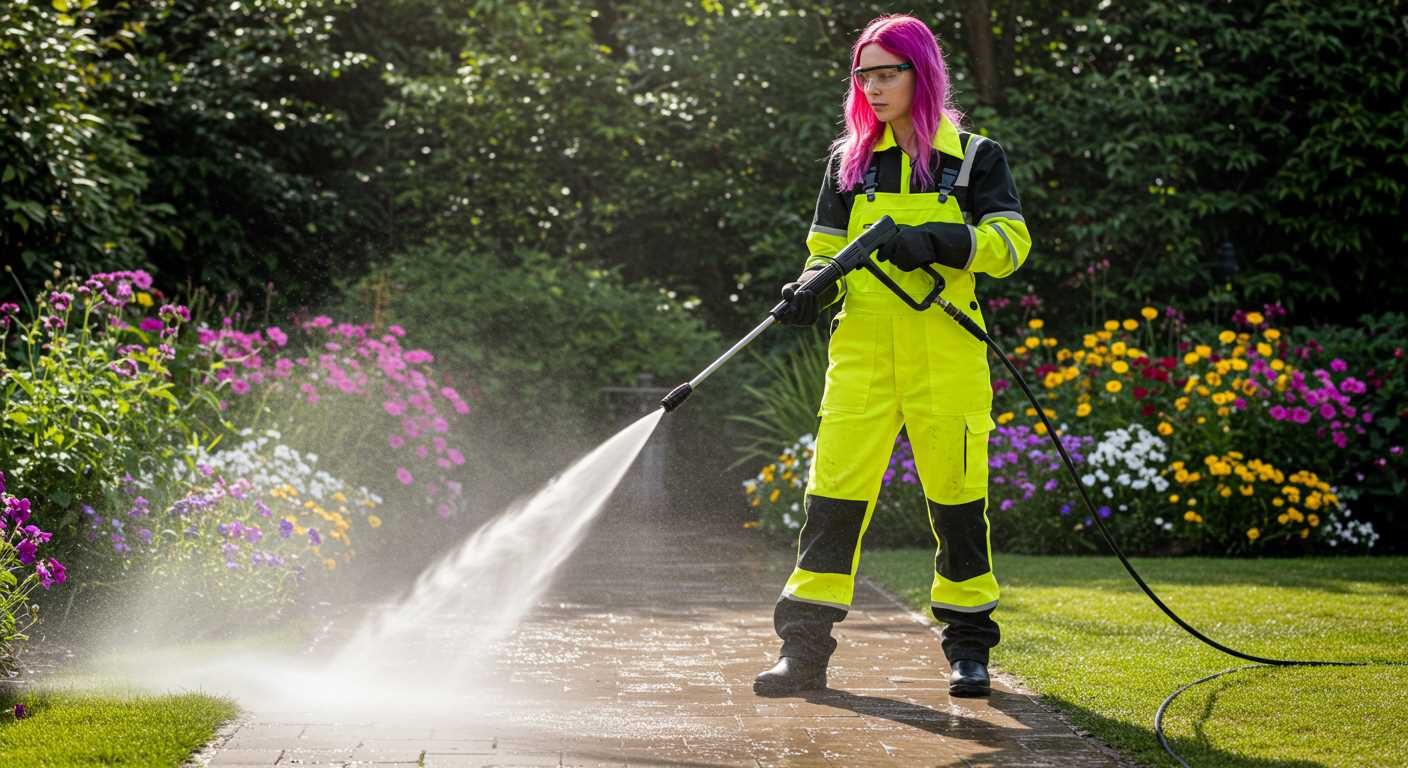


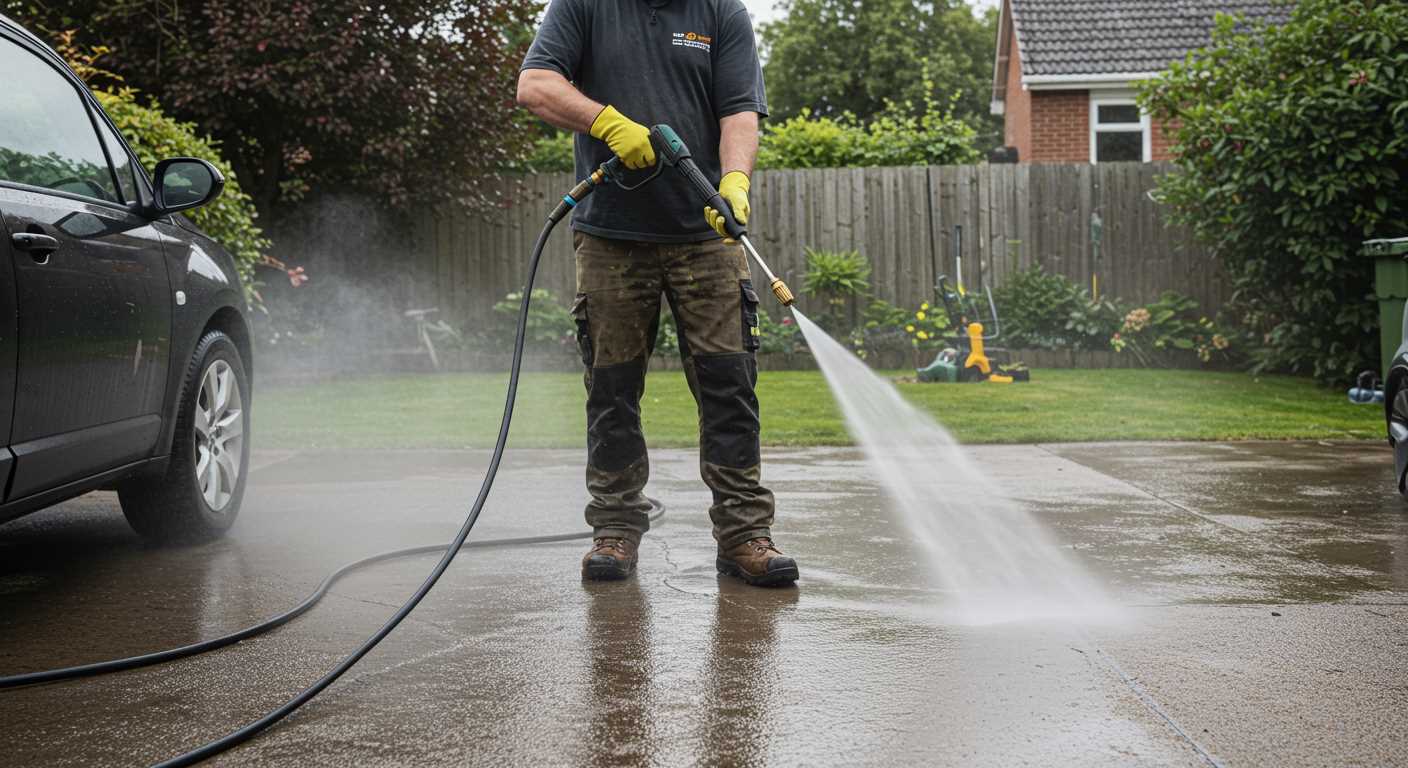
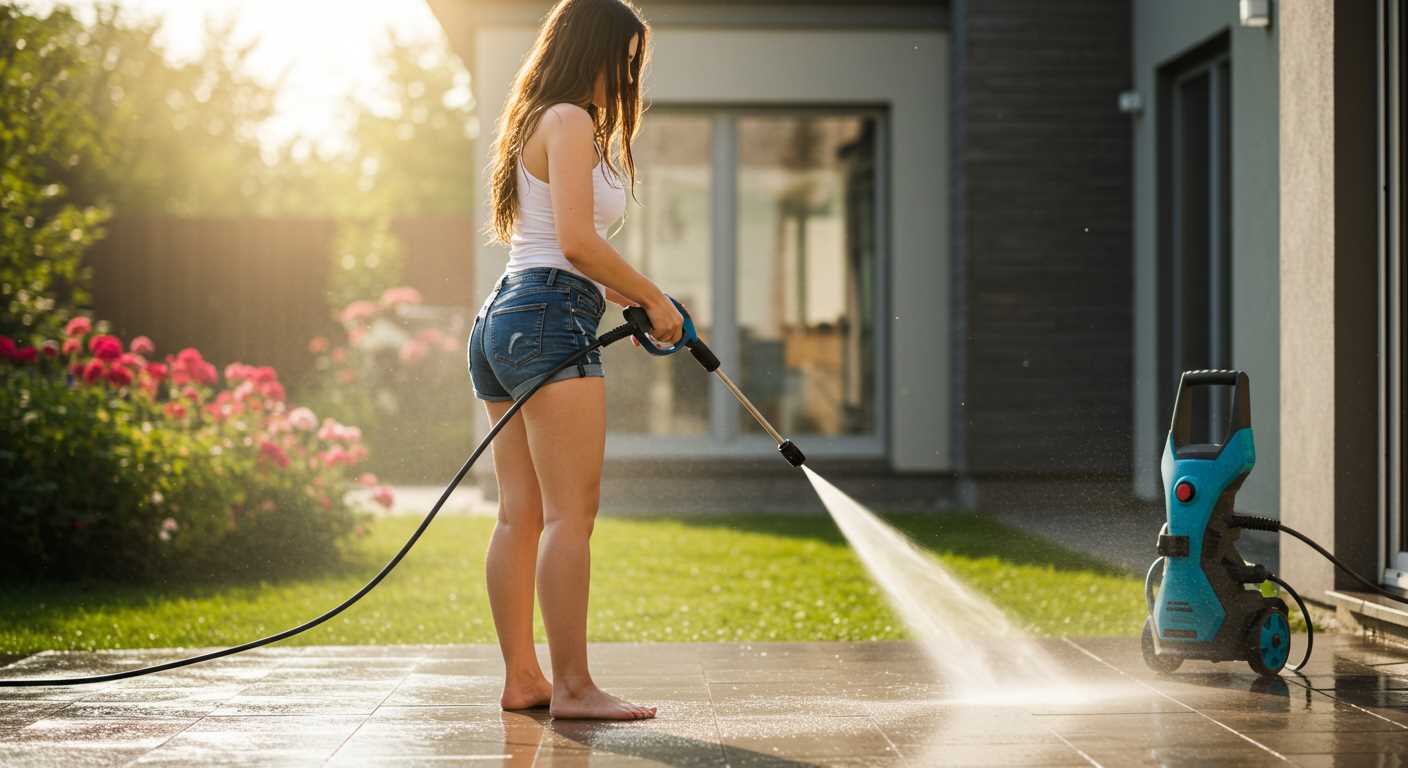
.jpg)


